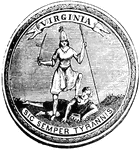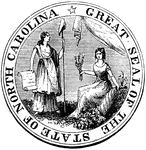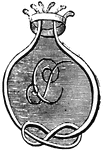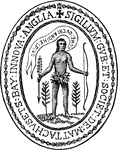
Washington Monument
"Washington Monument. The following are the inscriptions on the monument: East front: 'To George Washington,…
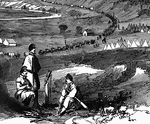
Strasburg Lookout
"View of the town of Strasburg, valley of the Shenandoah, occupied by the Federal forces under General…

Bridge at Strasburg
"View of the town of Strasburg, valley of the Shenandoah, occupied by the Federal forces under General…

Jamestown Island
"Distant view of Jamestown Island. This view is from the north side of what was once a marsh, but now…
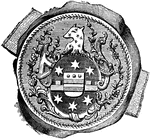
William Tryon Seal
"Seal and signature of Tryon. William Tryon was a native of Ireland, and was educated to the profession…

Tryon Palace
"Front view of Tryon's Palace. The view here given was the north front, toward the town. The center…
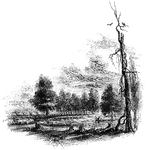
Regulator Battle-ground
"The Regulator battle-ground. This view is from the south side of the Salisbury Road, which is marked…

Guilford Battle-ground
"View of the battle-ground. This view is from the eminence southwest of the site of old Guilford Court…
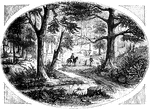
King's Mountain Battle-Ground
"View at King's Mountain battle-ground. This view is from the foot of the hill, whereon the hottest…
Sagitta
"These are little fish-like animals furnished with one or two fin-like organs on the body and a broad…

Sander's Creek
"View at Sander's Creek. This view is from the north side of the Creek. like the other stream, it is…

Nelson's Ferry
"View at Nelson's Ferry, the spot here portrayed, was an important locality during the Revolution. It…
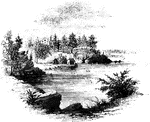
Turtle Bay
"View at Turtle Bay. Turtle Bay is a small rock-bound cove of the East River, at the foot of Forty-seventh…

Bronx
"Place where the British crossed the Bronx. This view is from the southeastern side of the Bronx, a…

Fort Washington
"View at Fort Washington. This is a view from the site of the interior works at Fort Washington from…

Hannibal
"Hannibal's Passage of the Alps. Hannibal determined to carry the war into Italy. To do this, he had…
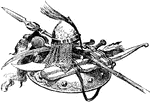
Saracen Arms
"Saracen Arms. Charlemagne now had to deal with certain non-Germanic peoples who were threatening his…
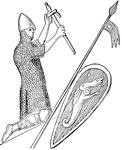
William the Conqueror
"William the Conqueror (1066-1087), as represented on his seal. Although William really ruled 'as king…

Dutch West India Flag
"Flag of the Dutch West India Company. When the rights of the company ceased, a new and more powerful…

Agave
"Century-plant. A large North American genus of plants, of the natural order Amaryllidaceæ, chiefly…
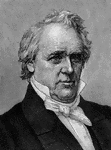
John Brown
In 1859, John Brown collected a small body of men, white and black, in the mountains of Maryland. He…

Alewife
"A North American fish, Clupea Vernalis, from 8 to 10 inches long, resembling a small shad, but much…
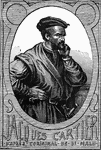
Jacques Cartier
Jacques Cartier, voyager of St. Malo, coasted along the north of Newfoundland in 1534 and passed through…
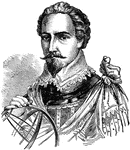
Sir Humphrey Gilbert
Sir Humphrey Gilbert (c. 1539 – 9 September 1583) of Devon in England was a half-brother of Sir Walter…

Araba
"A heavy, springless wagon, usually covered with a screen as shelter from the rays of the sun, drawn…
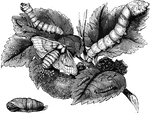
Silkworm Moth, Caterpillar, and Chrysalis
"This important insect is a native of the north of China; and a great portion of the supplies of silk…

Beaver
"The Beaver is a quadruped of the order Rodentia, or gnawers, the only species of its genus. It is very…

Drone Bee
"Bee is the common name given to a large family of hymenopterous or membranous-winged insects, of which…
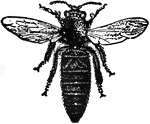
Queen Bee
"Bee is the common name given to a large family of hymenopterous or membranous-winged insects, of which…

Worker Bee
"Bee is the common name given to a large family of hymenopterous or membranous-winged insects, of which…

Royal Cells
"Bee is the common name given to a large family of hymenopterous or membranous-winged insects, of which…

Chicory
Chicory is a flowering plant with blue flowers, originally from the Old World but now seen growing wild…

Dakota Chief
"Dakota, or Dakotah is the name by which the Sioux Indians call themselves."—(Charles Leonard-Stuart,…

Date Palm
"Date Palm is a genus of palms, the most important species of which is the common date palm, the palm…

Drumfish
"Drumfish, or Drum, and other species of the same genus, fishes found on the Atlantic coasts of North…
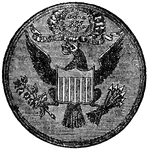
Eagle on Seal of United States
"The Eagle is a gold coin of the United States, value $10; half-eagle, $5; quarter-eagle, $2.50, double…
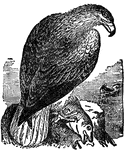
Erne
"The Erne is one of the 'bare-legged' eagles. The genus includes some seven species, represented apparently…

Grayling
"The Grayling is a genus of fresh-water fishes in the salmon family, distinguished from trout, etc.,…
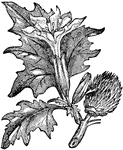
Thorn Apple
"Thorn Apple is a genus of plants. The common thorn apple is an annual plant, with smooth stem and leaves,…
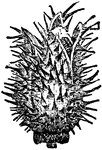
Thorn Apple Bud
"Thorn Apple is a genus of plants. The common thorn apple is an annual plant, with smooth stem and leaves,…
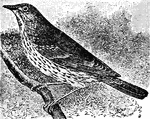
Song Thrush
"Thrush, in ornithology, is the name for any of the Turdidæ. They are universally distributed,…
Timothy Grass
"Timothy Grass is a hard coarse grass with cylindrical spikes from 2 to 6 inches long. It is used mixed…

Viper's Bugloss
"Viper's Bugloss is a genus of plants. The species are large herbaceous plants or shrubs, rough with…
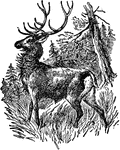
Wapiti
"Wapiti is the name given by the North American Indians to an animal, a native of North America, ranging…
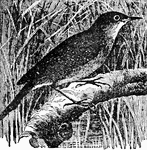
Reed Warbler
"Warbler is a popular name often applied to well-known singing birds of northern climes, whose notes…

Nest of Reed Warbler
"Warbler is a popular name often applied to well-known singing birds of northern climes, whose notes…
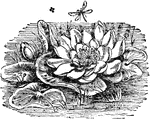
White Water Lily
"The Water Lily is an exogenous aquatic plant including eight genera, and all possessing submerged root…

Wormwood
"Wormwood is the genus Artemisia. The stem is one to three feet high, grooved, and angled; the leaves…
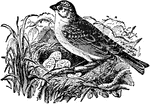
Yellowhammer
"The Yellow Hammer, or Yellow Bunting, is a bird widely distributed over North America and Europe. It…
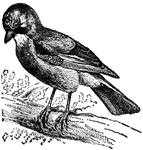
Jay
"Jay is the popular name of a species of birds belonging to the crow family, of a vinous red color;…
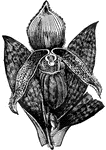
Lady's Slipper
"Lady's Slipper is a genus of plants. The genus is remarkable for the large inflated lip of the corolla.…

Lumpfish
"The Lump Fish, or Sucker, is named from the clumsiness of its form. The back is arched and sharp, the…

Skeleton of the Mammoth
"Mammoth is a species of extinct elephant, the fossil remains of which are found in European, Asiatic…
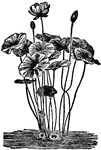
Nelumbium
"Nelumbium is the typical and only genus of the order Nelumbiaceæ. The species are remarkable…

Osprey
"The Osprey, the fish hawk, bald buzzard, or fishing eagle. A bird of prey, of almost world wide distribution…
